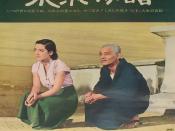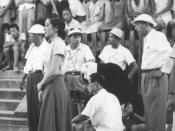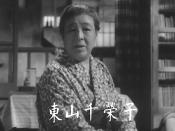In this essay, I shall be looking at the Japanese film director Yasujiro Ozu. I will look at three of his films, including Tokyo Story (1953), Late Spring (1949), and Early Summer (1951). Within the essay, I shall discuss what an auteur is, and where this theory came from. The essay will look at what it is that makes an auteur, and how Ozu can be defined as one. I shall look at the elements of the three aforementioned films by Ozu which I believe cohere into an artistic identity or signature, and I shall also look at the meanings which can be taken from these elements.
According to Stam, Burgoyne, and Flitterman-Lewis, the auteur is "the notion of the author as the sole originating and creative source of the text" (1992: 191). The auteur is attributed to the director of the film, and this quote suggests that the author, or director, of a film is the most important factor in a films production, and that they have control over every element of production.
According to Bordwell and Thompson, the director of a film "cannot be the author unless he or she seeks to fulfil every major role personally" (1997, pg. 38). Andre Bazin defined auteurism in La Politique des Auteurs (1957) as "the personal factor as a criterion of reference, and then postulating its permanence and even its progress from one work to the next", which means the director of a film is used as reference, and their personality progresses throughout their work. It suggests that the personal identity of the director should be taken into account when viewing a film. The auteur theory considers the personal style of a film, and suggests the director imposes his own personality on a film. It suggests that films by a certain...


